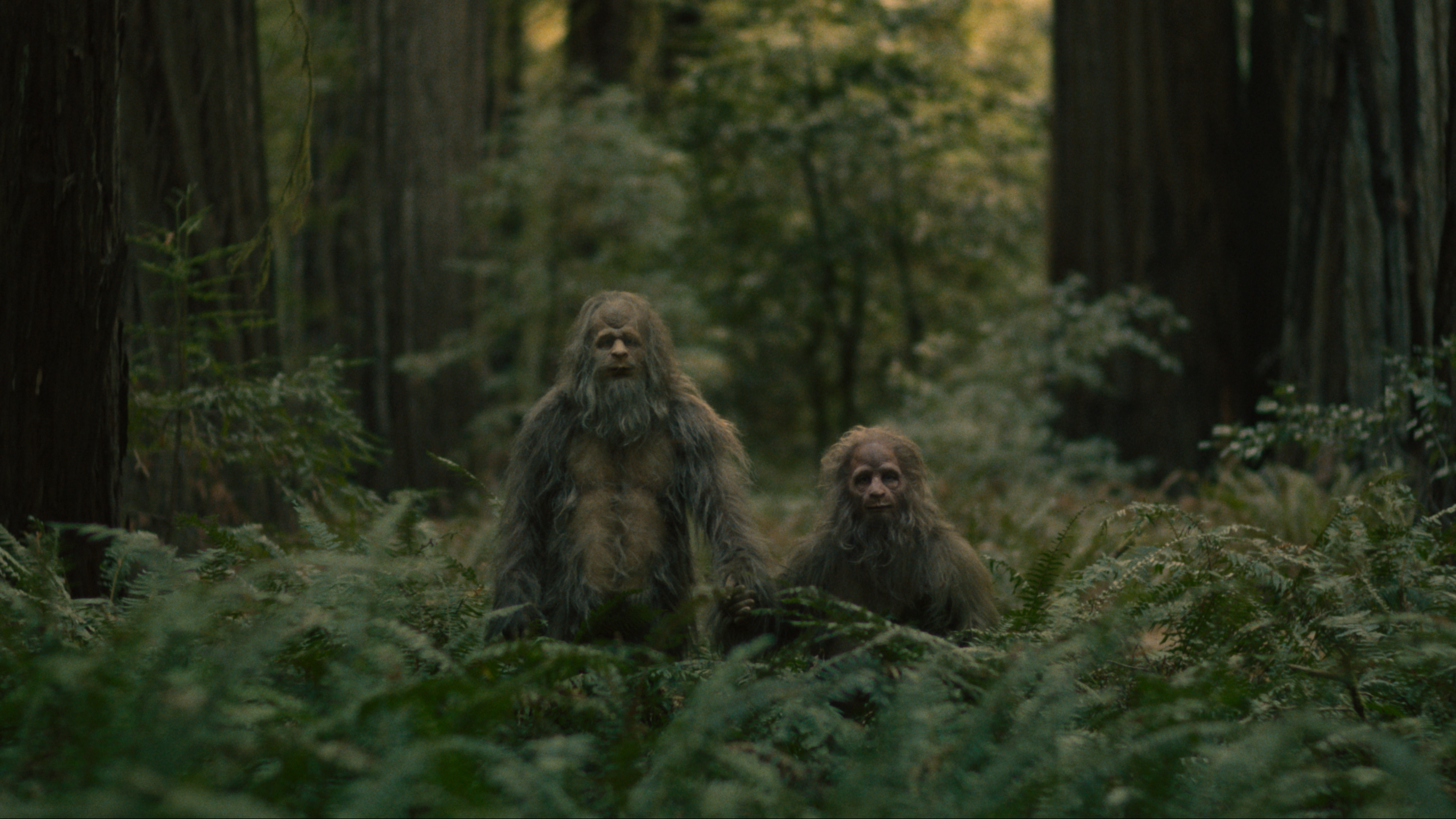Theatres have seen no shortage these past few months of ‘enhanced’ simians descended from franchises which predate twenty-first century CGI. Then there’s Sasquatch Sunset, a minor miracle from Nathan and David Zellner that embraces moviemaking’s original bells and whistles without apology. Alongside live-action Looney Tunes experiment Hundreds of Beavers (2024) and even Barbie (2023), Sasquatch Sunset is an example of using reality to celebrate artifice rather than artifice to imitate reality.

Wordlessly following a seasonal cycle in the lives of four bigfeet—Riley Keough, Jesse Eisenberg, Christophe Zajac-Denek, and Nathan Zellner, covered in Steve Newburn’s astonishing, museum-worthy prosthetics—the movie resides somewhere between a fable’s magical realism and the earnest intellectual curiosity of a vintage natural history magazine. The group wanders the forest in search of others like them, approximates the building blocks of mathematical intuition, and reaches something akin to self-consciousness. The Zellners’ latest is elemental but by no means simple. From narrativisation to technical execution, Sasquatch Sunset is a feat of craftsmanship. Director of photography Michael Gioulakis (Under the Silver Lake [2019] and Us [2019]) infuses the enchanted emerald woods of Northern California with the violets and reds of exotic flora, jetstreams of orange gushing from the cavities of fresh catch, and, not least of all, the blue of Keough’s wide, mournful eyes.
Besides an abundance of technical merit—and a fantastic, fittingly retro score courtesy of The Octopus Project—Sasquatch Sunset boasts a standout leading performance from Keough. The Zellners deserve credit for sticking to their vision and making the film dialogue-free, but no amount of creative ambition on their part could’ve produced a result this immersive without an artist of her expressivity. Eisenberg also delivers a remarkable turn; between Sasquatch Sunset and his sophomore directorial effort, A Real Pain (2024), the star who spent a period after The Social Network (2010) typecast as a neurotically verbose and unfeeling genius continues to reveal deep layers of emotion in his work.

The film’s outstanding acting and direction have been taken for granted by broad descriptions which overemphasise one explicit (never mind contextually appropriate!) instance of faecal-based humour. The moment hardly takes up enough time to distract viewers from the movie’s meditation on endangerment—that which threatens both its characters and its tradition of visual storytelling.
Would the Dawn of Man sequence have been designed on a computer were 2001: A Space Odyssey (1968) made three to four decades later? Did the handcrafted sets that gave The Wizard of Oz (1939) and Willy Wonka & the Chocolate Factory (1971) their enduring storybook unrealities merely solve, at the time, technologically imposed challenges? Even in that cynical and disheartening case, there’s no denying this bygone era’s prop masters, makeup crews, and production designers invented an art form unto itself. The most recent instalment in the Planet of the Apes franchise is further proof that median-quality CGI, while functionally sound, has yet to replicate the colours and textures of the filmmaking to which Sasquatch Sunset is a radiant love letter.
Sasquatch Sunset screened at the 2024 Sydney Film Festival on June 11 and 14, with an encore screening scheduled for June 20.
**********
Ronald Meyer is the co-host of No Pun(dit) Intended and a past contributor to Collider, Next Best Picture, Gold Derby, and High on Films.


